
. . . at various levels in the structure of the town, there are identifiable units. There are neighborhoods - IDENTIFIABLE NEIGHBORHOOD (14), clusters - HOUSE CLUSTER (37), communities of work - WORK COMMUNITY (41); and there are many smaller building complexes ringed around some realms of circulation - BUILDING COMPLEX (95), CIRCULATION REALMS (98). All of them get their identity most clearly from the fact that you pass through a definite gateway to enter them - it is this gateway acting as a threshold which creates the unit.

Any part of a town - large or small - which is to be identified by its inhabitants as a precinct of some kind, will be reinforced, helped in its distinctness, marked, and made more vivid, if the paths which enter it are marked by gateways where they cross the boundary.
Therefore:
Mark every boundary in the city which has important human meaning - the boundary of a building cluster, a neighborhood, a precinct - by great gateways where the major entering paths cross the boundary.
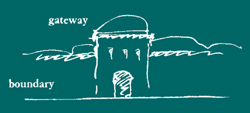

Many parts of a town have boundaries drawn around them. These boundaries are usually in people's minds. They mark the end of one kind of activity, one kind of place, and the beginning of another. In many cases, the activities themselves are made more sharp, more vivid, more alive, if the boundary which exists in people's minds is also present physically in the world.
A boundary around an important precinct, whether a neighborhood, a building complex, or some other area, is most critical at those points where paths cross the boundary. If the point where the path crosses the boundary is invisible, then to all intents and purposes the boundary is not there. It will be there, it will be felt, only if the crossing is marked. And essentially, the crossing of a boundary by a path can only be marked by a gateway. That is why all forms of gateway play such an important role in the environment.
A gateway can have many forms: a literal gate, a bridge, a passage between narrowly separated buildings, an avenue of trees, a gateway through a building. All of these have the same function: they mark the point where a path crosses a boundary and help maintain the boundary. All of them are "things" - not merely holes or gaps, but solid entities.
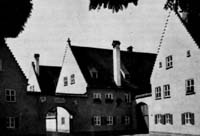
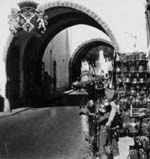
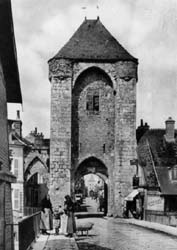
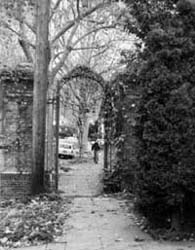 Gateways mark the points of transition.
In every case, the crucial feeling which this solid thing must create is the feeling of transition.
Gateways mark the points of transition.
In every case, the crucial feeling which this solid thing must create is the feeling of transition.
